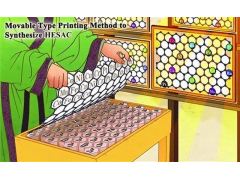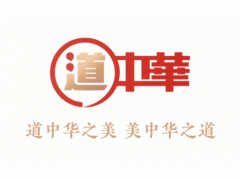For packaging and printing enterprises, digital printing technology, automation equipment and workflow tools are crucial to improve their productivity, reduce waste and reduce the demand for skilled labor. Although these trends have occurred before the outbreak of the new coronal disease, the new coronal disease further highlights the importance of these aspects.
Supply chain
Packaging and printing enterprises have been greatly affected by the supply chain and price, especially in the paper supply. In essence, the paper supply chain is very global. Enterprises in different countries and regions around the world basically need paper and other raw materials for production, coating and processing. Enterprises around the world are dealing with the supply of paper and other materials brought about by the labor force and the epidemic in different ways. As a packaging printing enterprise, one of the ways to deal with this crisis is to fully cooperate with dealers and make a good prediction of material demand.
Many paper mills have reduced their production capacity, resulting in a shortage of paper supply on the market, causing their prices to rise. In addition, freight costs also generally increase, and this situation will not end in the short term. In addition, delayed demand, logistics and rigid production processes have caused a huge negative impact on the paper supply. Perhaps the problem will gradually become a problem over time, but in the short term, this is a headache for packaging and printing enterprises, so packaging and printing companies should prepare goods as soon as possible.
The supply chain disruption caused by the new epidemic in 2020 will last until 2021. The global epidemic continues to affect manufacturing, consumption and logistics transportation. In addition to the rising cost of raw materials and the shortage of freight, enterprises in many industries around the world are facing enormous pressure. Although this situation will last until 2022, some measures can be taken to mitigate the impact. For example, plan ahead as much as possible and communicate with paper suppliers as soon as possible. Flexibility in the size and variety of paper inventory is also useful if the selected product is not available.
There is no doubt that we are in the midst of changes in the global market, which will have an impact for a long time to come. The current shortage and price uncertainty will last at least one year. Enterprises that are flexible enough to work with the right suppliers through difficult times will become stronger. As the raw material supply chain continues to affect product prices and availability, it forces packaging printers to use a variety of paper types to meet customer printing deadlines. For example, some packaging printers use more super wax paper and uncoated paper.
In addition, many packaging and printing enterprises will conduct comprehensive research and judgment in different ways according to their size and the market they serve. Although some enterprises purchase more paper and maintain inventory, other enterprises use optimization of the paper use process to adjust the cost of producing orders for customers. Many packaging and printing enterprises are unable to control the supply chain and pricing. The real way out is to improve the efficiency of creative solutions.
From the perspective of software, it is also very important for packaging and printing enterprises to carefully evaluate their work processes and understand the time that can be optimized from the time the operation enters the printing and digital production plants to the final delivery. By reducing errors and manual processes, some packaging and printing enterprises have even reduced costs by six figures. This is a continuous cost reduction, and also opens the door to more throughput and business growth opportunities.
Labor shortage
Another challenge facing packaging and printing suppliers is the lack of skilled workers. At present, European and American countries are facing a wide range of resignations. Many workers in the middle of their careers leave their original units to seek other development opportunities. It is important to retain these employees because they have the experience and knowledge needed to coach and train new employees. For packaging and printing suppliers, it is a good practice to ensure that employees stay in the company and provide incentives.
It is obvious that attracting and retaining skilled workers has become one of the biggest challenges facing the packaging and printing industry. In fact, even before the outbreak of the epidemic, the printing industry had undergone intergenerational transformation, and it was difficult to find substitutes for retired skilled workers. Many young people do not want to spend five years of apprenticeship to learn how to operate the flexographic printing machine. On the contrary, young people prefer to use the digital printing machine that they are more familiar with. In addition, the training will be easier and shorter. In the current crisis, this trend will only accelerate.
Some packaging and printing enterprises retained employees during the epidemic prevention and control period, while some packaging and printing enterprises were forced to lay off workers. once the production starts to recover in an all-round way, the packaging and printing enterprises start to recruit new employees again. They will find that there is a very short supply of workers, which is still the case. This has prompted companies to constantly find ways to complete work with fewer people, including evaluating processes to find out how to eliminate non value added work, and investing in systems that help automate. The learning curve of digital printing solutions is shorter, so it is easier to train and recruit new operators. Enterprises need to continue to bring new levels of automation and user interfaces, so that all skilled operators can improve their productivity and printing quality.
In general, digital printing presses provide an attractive environment for young workers. The similarity of the traditional offset press system is that the computer control system with integrated artificial intelligence (AI) runs the press, enabling inexperienced operators to obtain excellent results. Interestingly, using these new systems requires a new management model to instill automated methods and processes.
The hybrid ink-jet solution can be printed online with the offset press, adding variable data to the fixed print in a process, and then printing the personalized color box on a separate ink-jet or toner unit. Web printing and other automation technologies address the shortage of workers by increasing efficiency. However, it is one thing to discuss automation in the context of cost reduction. When almost no workers can be found to receive and complete orders, it becomes a problem in the market.
More and more companies are also focusing on software automation and equipment to support workflows that require less manual interaction. This is driving investment in new and upgraded hardware, software and free workflows, and will help enterprises meet customer needs with fewer people. The packaging and printing industry is experiencing labor shortage, the promotion of agile supply chain, the rise of e-commerce, and the growth to an unprecedented level in the short term. There is no doubt that this will be a long-term trend.
Future trends
It is expected that there will be more similar situations in the next time. Packaging and printing enterprises should continue to pay attention to industry trends and supply chains, and invest in automation when possible. The leading suppliers in the packaging and printing industry are also paying attention to the needs of customers and continue to innovate to help support customers. This innovation also goes beyond product solutions, including advances in business tools to help optimize production, and advances in forecasting and remote service technologies to help them maximize uptime.
External problems may still not be accurately predicted, so the only solution for packaging and printing enterprises is to optimize their internal processes. They will seek new sales channels and continue to improve customer service. Recent surveys show that more than 50% of packaging and printing companies will invest in software in the next few months. The epidemic has taught packaging and printing enterprises to invest in leading products, such as hardware, ink, media and software. These products are technically reliable and reliable, and allow multiple output applications, because market changes may soon determine the number. "
The driving force of automation, shorter order, less waste and full process control will dominate all printing fields, including commercial printing, packaging, digital and traditional printing, security printing, currency printing and electronic product printing. It follows Industry 4.0 or the fourth industrial revolution and combines the power of computers, digital data, artificial intelligence and electronic communication with the whole manufacturing industry. Incentives such as reduced labor resources, competitive technology, rising costs, shorter turnaround times, and demand for added value will not recover.
Safety and brand protection is an ongoing concern. The demand for anti-counterfeiting and other brand protection solutions is on the rise, which is an excellent opportunity for the printing ink, substrate and software fields. Digital printing solutions can provide great growth potential for governments, authorities, financial institutions and other institutions dealing with security documents, as well as brands that need to deal with the problem of counterfeiting, especially in the health products, cosmetics and food and beverage industries.
In 2022, the sales volume of major equipment suppliers will continue to increase. As a member of the packaging and printing industry, we are trying to make every process as efficient as possible, and at the same time, we are trying to enable people in the production chain to make decisions, manage and meet business development and customer experience requirements. The new crown epidemic situation has brought real challenges to the packaging and printing industry. Tools such as e-commerce and automation can help alleviate the burden on some people, but in the foreseeable future, problems such as supply chain shortage and access to skilled labor will still exist. However, the entire packaging and printing industry is still very flexible in the face of these challenges, and has actually developed. Obviously, the best era has not yet arrived.







